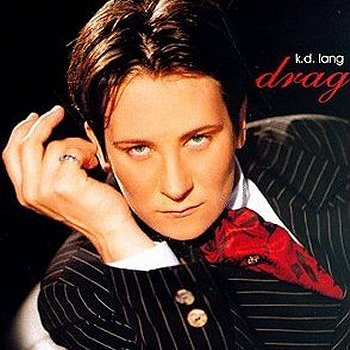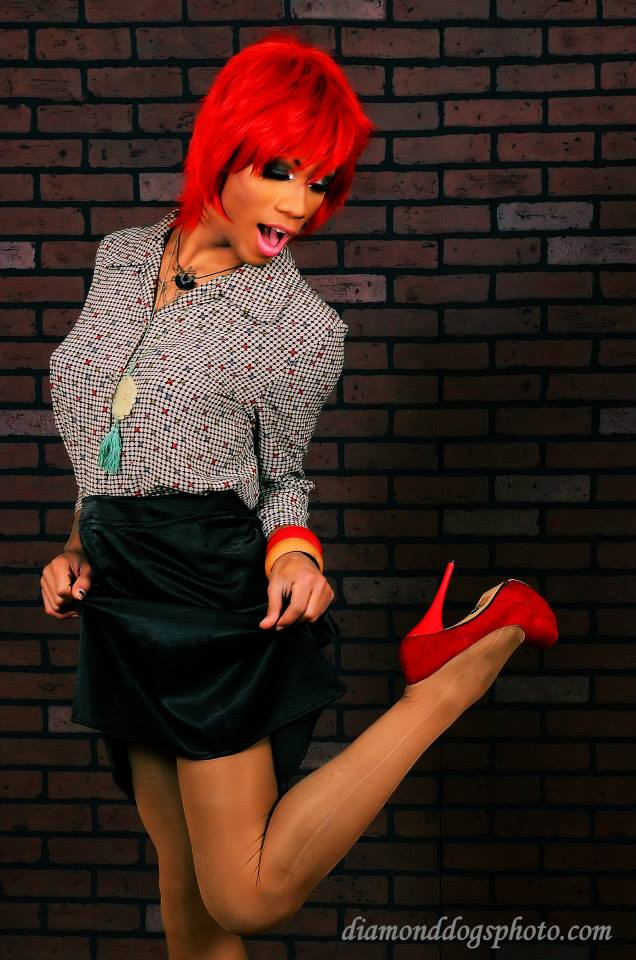Dina’s Diner April 9/20/18
AGREE TO DISAGREE — BUT POLITELY
I saw an item about Nicole Maines in TGForum’s “The Week in Trans” column in our March 26, 2018 edition. I remember when Nicole first came on the scene as a middle school trans activist and she has continued to impress at age 20 or 21 today. The TWIT item (thanks to Cecilia Barzyk for calling it out) linked to a Portland, Maine Press Herald opinion piece by Nicole advocating against approval for a Trump federal judicial nominee — Kyle Duncan.
I did a little research on Mr. Duncan and he is an attorney who has participated in several conservative lawsuits opposing marriage equality and transgender rights in different locations. As Nicole points out in her op-ed, his brief in the North Carolina “bathroom bill” suit takes the position that transgenderism is a “delusion” in the same way that anorexics delude themselves that they are overweight despite evidence to the contrary. I couldn’t find any overheated rhetoric attributed to Mr. Duncan but the fact that he attaches himself to these lawsuits to deny protections to others makes him seem a zealot.
In the course of my research, I came across an article on The Daily Beast news website (that had unflattering portraits of several other Trump judicial nominees. One, Jeff Mateer from Texas, had a number of rabid quotes ascribed to him such as when he warned that the LGBT movement “really shows you how Satan’s plan is working and the destruction that’s going on…there’ll be no line there… I mean, it’s disgusting.” He used the common canard, “Somebody wanted to marry a tree. People marrying their pets. We’re back to that time where debauchery rules.” Another nominee — Damien Schiff — who opposed an anti-bullying program because “it seems to teach not only that bullying of homosexuals is wrong, but also that the homosexual lifestyle is a good, and that homosexual families are the moral equivalent of traditional heterosexual families.”
And those are just a couple of examples. The point I would want to make here is that — especially in legal cases — a liberal and a conservative may have principled differences of opinion. But when you read someone using apocalyptic references or stretching a small point to an extreme, there is something wrong with that person’s mind. There’s a lot of that going around these days and it happens on the left (like comparing opponents to Hitler) as well as the right. There have always been the shouters and extremists.
I re-read Nicole’s newspaper column and she never resorts to name-calling or forecasting dire consequences to make her point that Mr. Duncan should be turned away from the federal bench. I wish the opponents of LGBT protections (and some of the folks on our side, too) would speak reasonably, lay out their arguments logically if they can, get off the Armageddon language, and see if we can get together on something.
MAXI’S STORY MAKES THE POINT
Another item in the March 26 TGF.com TWIT column reported an incident at a grocery store with drag performer Maxi Glamour. Here is Cecilia’s item in full: “Drag performer Maxi Glamour had just finished a performance and stopped in at the Schnucks grocery store in St. Louis to pick up some essential items. She wasn’t in the store for long when two security guards approached her and told her she’d have to get out. Why? She was still in her performance makeup and apparently that didn’t sit well with the guards. After posting a video on Facebook she got a call from store management saying the guards had acted on their own initiative and they were no longer working there. Ms. Glamour was told she was welcome back at any time, in any state of attire.”
In last month’s Diner, I had an item about the safest travel countries for LGBT visitors as measured by Spartacus travel service. I think Maxi’s experience and the travel advisory make an interesting point that is probably self-evident but I’ll go through it anyway. In the travel rankings, affluent, modern, liberal-democratic countries generally ranked high in tolerance. The lesser-developed, authoritarian, religiously dominated countries ranked much lower and rounded out the bottom rankings. As we’ve seen in many disputes over discriminatory actions against gay and trans people here in the U.S., the parties with a broader view — especially the business community and the better educated, affluent individuals are generally against discriminatory policies promoted by insular, narrowly focused political and religious groups. And, yes, of course there are exceptions to this rule but it generally holds up, I believe.
An individual or society with only a small economic buffer against loss (and those are usually the least affluent and least educated, or those holding power by force rather than choice), the more they will distrust “otherness” or cultural change. The two dopey security guards in Schnuck’s who chose to take a tunnel view of someone they didn’t approve were overruled by their bosses who have a broader perspective (100 stores and 15,000 employees) of how to treat people in a modern society. And thank goodness for that.
K. D. DID
The New York Times had a long profile of singer K D Lang in the  March 22, 2018 edition. The blurb below the headline said, “The idea that an openly gay woman could become a pop idol was seismic 25 years ago.” Actually, K D came on the scene a little longer than 25 years ago but the Times seemed to be referring to K D’s big hit Constant Craving that came out in 1992. Most people’s introduction to Ms. Lang was her 1987 rocking square dance number Turn Me Round.
March 22, 2018 edition. The blurb below the headline said, “The idea that an openly gay woman could become a pop idol was seismic 25 years ago.” Actually, K D came on the scene a little longer than 25 years ago but the Times seemed to be referring to K D’s big hit Constant Craving that came out in 1992. Most people’s introduction to Ms. Lang was her 1987 rocking square dance number Turn Me Round.
The Times article talked about the scene in the early 1990’s before Lang’s Ingenue album was released and her androgyny hit the mainstream. “…the AIDS crisis had been ravaging the gay community for over a decade…Madonna’s hit song “Vogue,” her rendition of the doomed drag ball society, hit number one in 30 countries…a year after that, the drag star RuPaul would be selling lipstick for MAC cosmetics.” Gay women, however, still did not have a breakthrough star. She mentioned that the Queer Nation group was outing people so she came out herself in 1992. “I have always been androgynous, so it comes naturally. Obviously, when I came out it was a big deal but I did get tired of it because it took away from my music,” she told the Times.
 She addresses the arc of her career now. “At 25 I was an extrovert and pushing myself on people. Now, I’m an introvert, which can be incongruent with being a performer.” She mentions a few other famous performers whose careers “went dark” for awhile although they continued to work as she has. After the whirlwind of being “discovered” by the mass audience doing so much “I’ve started sort of narrowing my assessment of what I’m actually good at, which is probably just singing.” The Times article quotes several people on the power of K D’s voice and songs like Constant Craving or her duet with Roy Orbison on Crying are well-served by its range and expressiveness.
She addresses the arc of her career now. “At 25 I was an extrovert and pushing myself on people. Now, I’m an introvert, which can be incongruent with being a performer.” She mentions a few other famous performers whose careers “went dark” for awhile although they continued to work as she has. After the whirlwind of being “discovered” by the mass audience doing so much “I’ve started sort of narrowing my assessment of what I’m actually good at, which is probably just singing.” The Times article quotes several people on the power of K D’s voice and songs like Constant Craving or her duet with Roy Orbison on Crying are well-served by its range and expressiveness.
In 1997, Lang released an album titled Drag. Her Wikipedia page says, “an album of cover tunes dedicated to ‘smoke’ (specifically cigarette smoking). The album cover and booklet photographs show Lang in a man’s suit, referring to crossdressing as another possible meaning of the word ‘drag.’ K D was also famously photographed in a man’s suit and face full of lather being shaved by supermodel Cindy Crawford for a Vanity Fair cover in 1993. She seems good humored about how the public perceives her. The Times article begins by covering a concert performance where she closes with Constant Craving and let’s the audience sing the refrains with her. “That’s what people want,” she said.
PHOTOS BOUND TO AMAZE
The New York Times Arts section had a review of a photography exhibit at the Museum of Sex in Manhattan, spring and summer of 2018. (Note to self: visit the Museum of Sex sometime.) The article appeared on March 2, 2018. The photographer-artist exhibiting the work is Nobuyoshi Araki who the Times describes as “Japan’s most prolific, most controversial, and most disobedient photographer.” The Times goes on to say, “For more than 50 years, Nobuyoshi Araki has pushed the limits of production — he has taken an uncountable number of photographs, gathered into something like 500 books — and pushed the limits, too, of free expression. He was arrested once on obscenity charges, and Japanese and foreign authorities have censored his exhibitions of Tokyo streetscapes, blossoming flowers, and, most notoriously, women trussed up in the baroque rope bondage technique known as kinbaku-bi, or “the beauty of tight binding.”
You can see by the accompanying photo that appeared in the Times how it catches the eye. Kinbaku is a Japanese style of bondage or BDSM which involves tying a person up using simple yet visually intricate patterns, usually with several pieces of thin rope.” You may have heard of “shibari” style bondage (c’mon, you know you have) which literally translates as “decoratively tie.” When I did a Google image search for “kinbaku-bi” many of the results were the work of Mr Araki. Most of them are “not safe for work” (nudity as well as the bondage itself) but it differs from most forms of erotic bondage photography in that the models are not gagged or seem in distress. The models often are draped in traditional dress rather than lingerie or fetish fashion.
There is a correlation of bondage and crossdressing for many crossdressers, judging from online groups and photo sharing sites. I guess there are a lot of psychological answers why that might be so. There also seems to be (from unscientific personal observation) a high proportion of Asian crossdressers into bondage. I’ve never heard or fathomed why that might be so — assuming it is true at all. Just curious, y’know?
In the Araki exhibit at the Museum of Sex, the Times reports that a serious effort is made to convey that the bondage and situations were fully consensual. It seems more important than ever to point this out. The Times says, “The show also smartly includes video interviews with several models, who speak of their work as consensual, fulfilling, and, most revealingly, collaborative. [Araki’s] intrepid model Shino, instantly recognizable with her freckled, elongated face, explains that posing in bondage ‘was really like the extension of a relationship.’ The model Komari uses the same analogy: ‘Even as a model our relationship is one of two human beings.’ Mr. Araki once said: “My heart beats, I squeeze the shutter.”
BROOKE, BIKINIS, AND BOAT SCENES
A couple of weeks ago, some news sites published photos of Brooke Shields (at age 52 now) in a bikini. Around the same time, The New York Times on March 22, 2018 had an article about Brooke promoting her clothing line with QVC, the home shopping network. As expected, Brooke looked good in a bikini. The middle age swimsuit photo is now common for female celebs of a certain age. Elizabeth Hurley also recently published some seaside snaps at age 52 as did Cindy Crawford at 51 and, of course, Christie Brinkley is still slammin’ in a swimsuit at 60-something. But back to Brooke.
My only real interest in Brooke Shields also involves a swimsuit but dates back to a 1984 television movie titled Wet Gold. Briefly, the story involved Brooke on a boat with two dudes as they searched for hidden treasure. There was one very memorable scene in which Brooke was sunbathing on the prow of the boat. Wearing a black monokini and slathered with suntan lotion, Brooke momentarily reaches for a hose and drenches herself on the face and over her body with a gentle shower of cool water. You could say it was a gratuitous shower scene — and she wasn’t even naked. In fact, it was hotter than bare skin could ever be.
In 1984, Brooke was 19 years old, so having her get symbolically bukkake’d by a water hose did not raise any eyebrows (although it did tent some trouser fronts, I’m sure). But long before that, she had become famous for the sexualized start of her modeling and acting career at age 12 in the film Pretty Baby in which she played an underage prostitute. Then came the semi-nude teenage love story The Blue Lagoon at 15 years of age. Many of the images from Brooke’s mid-teen modeling years — glammed up with come hither looks — would be deemed inappropriate or at least “icky” by today’s standards. She managed to get past all that and her television and film credits are many — and now she is selling her own clothing line.
So good for Brooke Shields and congratulations on looking good in a bikini at age 52. But she’ll never look better than she did in one scene in a 34 year old made-for-tv movie, in my mind. It was worth its weight in Wet Gold.
Care to make a comment on this post? Login here and use the comment area below.
Category: Transgender Fun & Entertainment, Transgender Opinion















